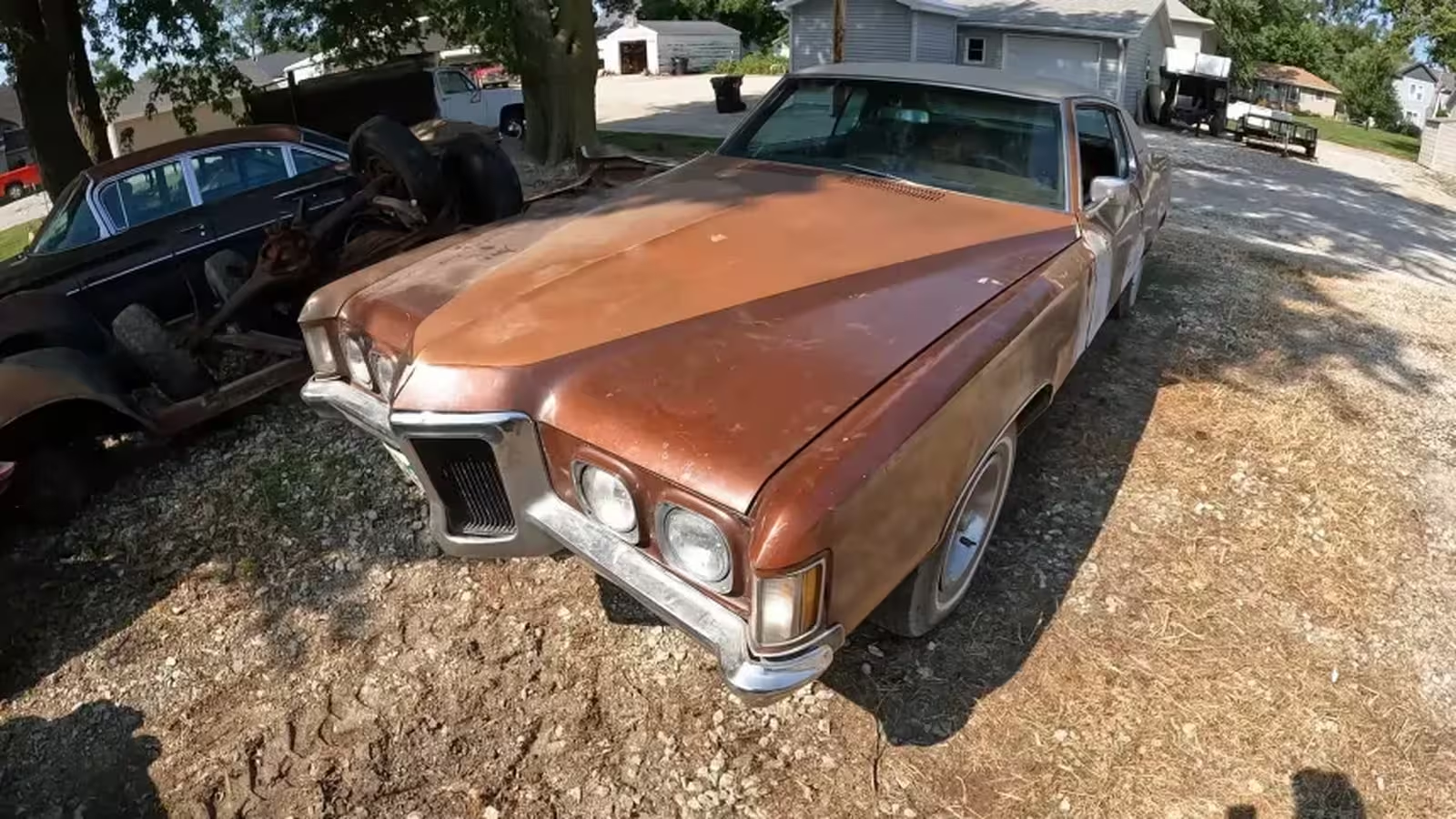7 Minutes
The Pontiac Grand Prix stands as one of America’s most celebrated personal luxury coupes, seamlessly blending muscle car spirit with refined comfort. While numerous cars from the classic era command respect, few stories are as compelling as the recent resurrection of a 1970 Grand Prix equipped with the coveted Hurst four-speed manual—an automobile so rare that only a handful remain. Join us as we delve into the car’s fascinating history, design, performance, and a heroic revival that proves muscle car culture is alive and well.
The Origins of the Pontiac Grand Prix: Personal Luxury Meets American Muscle
Pontiac debuted the Grand Prix in 1962, aiming to offer discerning buyers more than just practical transportation. Engineered on the robust Catalina chassis, this luxury coupe featured bucket seats, a center console, and a unique emphasis on driver engagement. Its inaugural year saw just over 30,000 cars leave the assembly line; by 1963, sales more than doubled to nearly 73,000—a remarkable feat given the car’s upscale positioning and price tag.
From 1965 through 1968, the Grand Prix underwent a stunning makeover, adopting the classic 'Coke-bottle' styling that became a hallmark of Detroit’s finest. Powertrain options ranged from a refined 389 V8 to a fire-breathing 428 HO Tri-Power, which delivered an astonishing 390 horsepower for those serious about performance. Production numbers hovered in the 50,000s annually, yet the appeal of limited-run, high-output versions keeps collectors searching to this day.
The Third Generation Revolution: G-body Power and Rarity
From 1969 to 1972, the Grand Prix entered its G-body third generation, which many enthusiasts hail as the golden era of personal luxury coupes. The 1969 model year was especially noteworthy, as Pontiac produced a record-shattering 112,500 Grand Prix coupes, driven in part by the car’s sophisticated design and potent standard V8— a 400-cubic inch Pontiac engine with up to 350 horsepower (in high-compression variants). Buyers could opt for a three-speed manual or a Hydramatic automatic transmission.
The 1970 Grand Prix saw notable changes, most significantly the transition from the famed 428 to a burly 455-ci V8. This engine maintained the headline 370 hp performance but boosted torque to a thumping 500 lb-ft, making it a formidable force on the streets. Both the 400 and 455 V8s could be paired with the exceedingly rare floor-shifted four-speed manual transmission—one of the most desirable setups among muscle car collectors. Surprisingly, only 329 examples left the factory in 1970 with this manual, cementing their position among the rarest vintage Pontiacs.
Despite the model’s growing capabilities, sales contracted sharply that year, dipping to about 66,000 units—a 40% slide attributed in part to changing consumer tastes and economic pressures. The Grand Prix would ultimately reach its lifetime production peak in 1978 (over 228,000 units), but those later models were smaller and less performance-focused. The G-body Grand Prix coupes from the early ‘70s—especially four-speed Survivors—are treasured in today’s collector car market for their unmatched blend of style, power, and exclusivity.
Transmission Choices and the Hurst Rarity
While most Grand Prix buyers selected the smooth-shifting GM Turbo-Hydramatic automatic to complement the car’s luxury image, a few enthusiasts opted for the pure driving experience: a console-mounted Hurst four-speed manual. Manuals persisted until midway through 1971, making these cars almost unicorns today. For context, the four-speed option added a considerable $226 to the sticker price in 1970—a significant investment at the time.
The Incredible Resurrection: A YouTube Mechanic’s Tale
Classic car rescues are filled with drama, surprises, and technical wizardry, and Jeff Herrick of the Chief Classics YouTube channel knows this all too well. A Nebraska-based muscle car enthusiast and Pontiac loyalist, Jeff stumbled upon his Grand Prix not by design, but by fortune. Intent on acquiring a 1965 Catalina 2+2 with the legendary 421 HO Tri-Power, he found himself intrigued by a long-dormant 1970 Grand Prix quietly rusting away at the back of the seller’s lot.
The car, showing 90,000 miles and sporting a host of mechanical issues, was far from pristine. Years of neglect and a leaky gas tank had taken their toll. The original powertrain remained in place, but the V8 was crusty and the body revealed typical corrosion, even beneath the white vinyl roof. Yet, the Grand Prix’s rarity and potential were irresistible.
Bringing the Monster Back to Life
The initial revival focused on reviving the iconic 400 V8. After a few strategic pours of fresh gasoline into the carburetor and the installation of new spark plugs, the engine was coaxed into running. Nonetheless, years languishing in hibernation meant the eight cylinders weren’t all pulling their weight, with compression tests revealing three running under par. Still, the car was a survivor.
Next came the mandatory oil change, vital after any extended period off the road. Handling the unique double STP oil filter setup provided both challenge and amusement for the mechanic. Attention then shifted to the main attraction: the Hurst four-speed manual transmission. To Jeff’s shock, he discovered the gearbox housing was filled not with oil, but with murky, muddy water—a mystery yet solved but not uncommon in barn finds exposed to the elements.
A leaky driveshaft seal at the 12-bolt rear axle and sticky U-joints prompted an undercarriage refresh. Jeff meticulously aligned components, replaced seals, and ensured the powertrain was properly lubricated to withstand future miles.
Overhauling Critical Systems: Fuel and Brakes
Reviving the Grand Prix wasn’t just a test of patience but of ingenuity, especially when tackling the ancient fuel and brake systems. The fuel lines were badly corroded and filters were clogged, so a temporary rubber hose bypass got fuel flowing just enough for initial tests. The original starter, briefly cooperative, failed and was replaced with a modern unit for reliable fire-ups.
Testing the gear shifter revealed the Hurst stick was operational, if stiff. After thorough cleaning and lubrication, Jeff successfully engaged all four gears, even though each slot demanded determination—a hallmark of authentic American muscle cars.
However, no project car is ready for the road without safe brakes, and here the Grand Prix presented its most serious challenge. A leaking proportioning valve and seized emergency brake cables forced creative fixes. Ultimately, Jeff’s persistence paid off, and the car took its first drive under its own power in years—a triumphant, if short-lived, cruise halted by a familiar foe: a failed fuel system.
When a temporary patch couldn’t sustain engine demands, Jeff resorted to a portable gas tank stowed in the trunk—a classic restorer’s trick to bypass problematic factory components.
Performance, Market Positioning, and Comparison
The 1970 Grand Prix Hurst was a formidable contender in the muscle-luxury coupe market, marrying the brute force of a 370-hp V8 (and up to 500 lb-ft torque with the mighty 455 option) with impeccable Pontiac styling. While brands like Chrysler and Ford offered their own spins on personal luxury performance, the Grand Prix stood out for its unique combination of G-body agility, stylish interior appointments, and select availability of enthusiast features such as the four-speed manual.
In modern collector circles, early ’70s Grand Prix models continue to attract attention, particularly those equipped with the elusive Hurst shifter and factory high-output V8s. These cars outperform many rivals in rarity and desirability, with surviving unrestored examples—especially with original drivetrains and manual transmissions—commanding premium values at auction and private sale.
Conclusion: Muscle Car Heritage Lives On
Bringing an ultra-rare classic like the 1970 Pontiac Grand Prix Hurst back to life is no small feat. Jeff Herrick’s dedication, technical prowess, and love for American automotive history have not only rescued a piece of Detroit’s golden era but also reminded enthusiasts everywhere of the enduring allure of original muscle cars. With parts investments totaling around $1,500 and countless hours of labor, this Grand Prix is now roadworthy once more, awaiting its next chapter—and perhaps a new caretaker who appreciates its legacy.
If you’re in the market for an authentic G-body performance icon, or just want to witness a true muscle car revival, the story (and video) of this Pontiac Grand Prix is sure to inspire.
Source: autoevolution



Comments